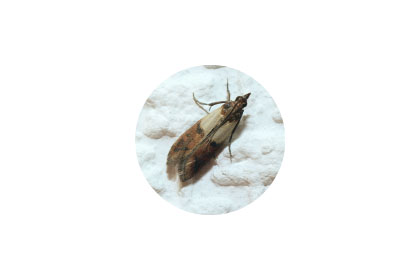It’s a Monday night, and Lucie has a small craving. So she opens the pantry, looking for a snack to enjoy while watching a TV show. Everything looks so appetizing… until she notices something strange. Picking up the bag of ketchup chips, a few crumbs fall to the floor. The bag is punctured, but obviously not with a chisel or a knife: instead, the bag has been gnawed. Weird. “I’ll have crackers instead,” thought Lucy. But now the box of crackers seems to have suffered the same fate!
What could have done this? How to avoid the same situation as Lucie? And how do we get rid of this problem if we already have it?
What happened to Lucy’s bag of chips and box of crackers?
Of course, many types of bugs like to get into our food. Lucie decides to clean out her closets to find the culprit. What does she discover? A cream-colored larva, measuring about 1.5 millimeters. It is an Indian moth larva, an insect that can cause havoc in bakeries, restaurants, homes (in short, in any place where food is found). As an adult, the Indian moth is harmless, and is characterized by its grayish and brownish color, its length of 5 to 8 mm, its wings and its small legs. If you find this moth in your home, it does not mean you have an infestation. It could simply be that the insect took advantage of a moment when the door to your home was open to enter. However, if, like Lucie, you find a larva, it would be very surprising if it had no companions. So the problem is much more real, and you need to act quickly.
How to avoid having Indian moths in your home?
To avoid having Indian moths in your home, you need to take a few concrete steps. For example, check food packages (even pet food) you bring home from the grocery store for holes or silk marks. Why traces of silk? In fact, the adult female will sometimes settle in food containers, and then lay her eggs. These, in order to pass to the stage of chrysalis, will create a cocoon made of silk to be rolled up. So, if you find silk, traces of exoskeleton or excrement in your food, the problem is already there.
What else can be done to avoid this? Of course, try to keep your food in airtight containers, and clean areas where you store edibles frequently.
How to get rid of Indian moths if you already have them in your home?
As soon as Lucie sees the larva in her pantry, what does she do? She calls Brisebois Extermination to have a qualified professional come and take care of the situation! This way, she can quickly enjoy the ketchup chips she loves so much, without having to worry about what’s going on inside the bag!

